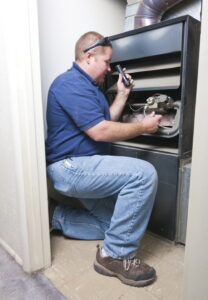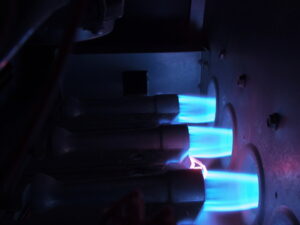Trying to understand your furnace can be a complicated endeavor. There are lots of parts, pieces, and terms to know, each with their own purpose and value. This can make the process of maintaining your home’s heating system less than enjoyable, as it opens the door for confusion and a sense of feeling absolutely overwhelmed.
If you’re sick of hearing all of the industry jargon and not knowing what’s being said, here are six terms you should definitely start learning.
AFUE (Annual Fuel Utilization Efficiency)
Annual Fuel Utilization Efficiency is used to convey how efficient a furnace is. It measures this through how much heat a unit produces for every volume of fuel it consumes per year. It uses a rating system that indicates this efficiency through a percentage score, with the higher the number meaning a more efficient furnace. AFUE is important because it can affect how much you spend on your heating bill; the higher the rating, the less money you’ll need to spend to keep your home warm.
Heat Exchanger
The heat exchanger is a thin metal component-oriented between the blower and combustion chamber of your furnace, which works to distribute heated air from it through to air ducts and the living spaces of your home. The heat exchanger must be totally sealed in order to function normally and prevent gasses from leaking. It’s thus an essential point of interest when it comes to your furnace and its maintenance.
Electric Furnace
While it functions similarly to a gas furnace, an electric furnace uses electricity to heat the air of your home. The main difference between it and a gas furnace is how it heats the air, with an electric unit using coils to transfer heat rather than fuel combustion.
Electric Resistance
The term electric resistance refers to the process of heating a coil to warm up the space around it. This is the main method by which electric furnaces generate heat.
Electric Ignition
The ignition is what starts the heating process in furnaces and allows them to operate. In the case of electronic ignitions, this function is carried out through the use of electricity. It uses a process of high-voltage sparks that jump between two electrodes in order to start the fuel-burning process.
Pilot Light
Pilot lights work to perform the same function as electronic ignition systems, yet in a different way. Rather than using electricity to start the heating process, pilot lights work as small burners that ignite the rest of the system through combustion when needed. Pilot lights are a more outdated piece of technology in home heating, and will most often be absent from modern systems.
While there’s a lot to know about furnaces, what they do and how they work, understanding them can be a quite simple process with the right application and effort. Given how complicated they can get, this once again serves as a friendly reminder to always consult a professional when in doubt about managing any issues with your furnace.
Need top-notch furnace repair in Dublin, CA? Call Comfy Heating & Air Conditioning Inc. to furnace services you can count on!
Whether you require installation, repair, or maintenance, our technicians will assist you with top-quality service at any time of the day or night. Take comfort in knowing your indoor air quality is the best it can be with MOE heating & cooling services Ontario's solution for heating, air conditioning, and ventilation that’s cooler than the rest.
Contact us to schedule a visit. Our qualified team of technicians, are always ready to help you and guide you for heating and cooling issues. Weather you want to replace an old furnace or install a brand new air conditioner, we are here to help you. Our main office is at Kitchener but we can service most of Ontario's cities
Source link




Add Comment